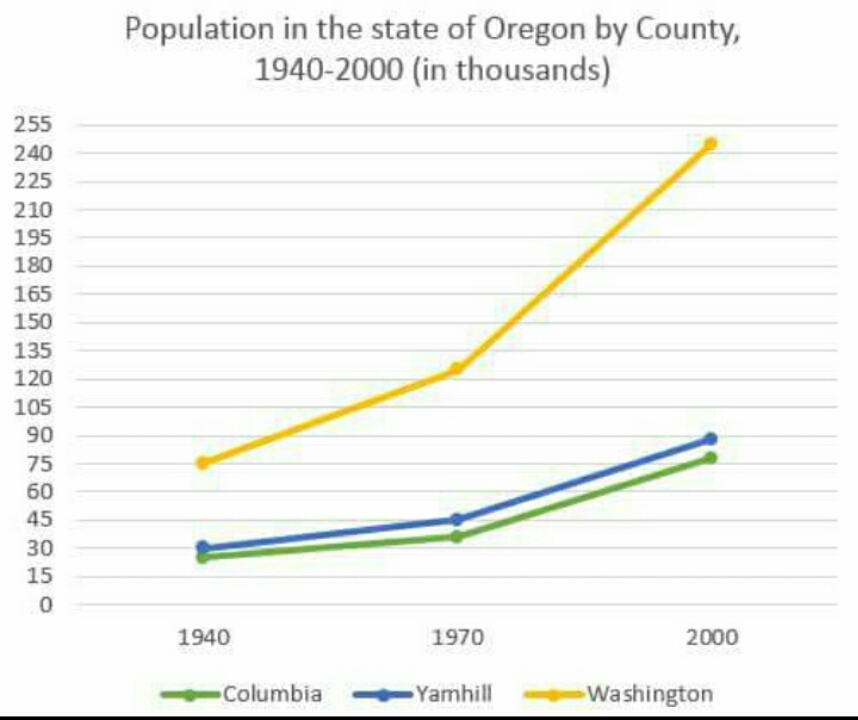The line graph compares the amount of population between 1940 and 2000 in three distinct countries (Columbia, Yamhill, Washington), which is measured in thousands. Overall, it can be seen that the number of population in each country rose over the period shown. A much larger sum of inhabitant in Washington experienced the fastest growth, whilst Columbia and Yamhill steadily increased.
In 1940, the proportion of population in Washington stood at 75,000. Then, the figure for Washington's residents rose to around 125,000 in 1970, over a 30-year period. Subsequently, from 1970 to 2000, Washington's population grew noticeably to virtually 245,000 habitans, experiencing more than a triple amount of population in 1940. Its proportion showed by far the most significant growth compared to other figures.
On the other side, Columbia and Yamhil began at fairly similar proportion, at about 20,000 and 30,000 respectively in 1940. In 1970, there were slight rise in the amount of population in both countries which hit roughly 35,000 and 45,000 inhabitans successively. At the end of period, the figures for population in Columbia and Yamhil finished at roughly 76,000 and 88,000 residents in succession.
In 1940, the proportion of population in Washington stood at 75,000. Then, the figure for Washington's residents rose to around 125,000 in 1970, over a 30-year period. Subsequently, from 1970 to 2000, Washington's population grew noticeably to virtually 245,000 habitans, experiencing more than a triple amount of population in 1940. Its proportion showed by far the most significant growth compared to other figures.
On the other side, Columbia and Yamhil began at fairly similar proportion, at about 20,000 and 30,000 respectively in 1940. In 1970, there were slight rise in the amount of population in both countries which hit roughly 35,000 and 45,000 inhabitans successively. At the end of period, the figures for population in Columbia and Yamhil finished at roughly 76,000 and 88,000 residents in succession.

PhotoGrid_1456226400.jpg
